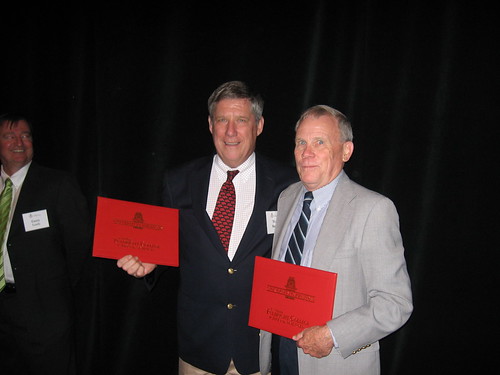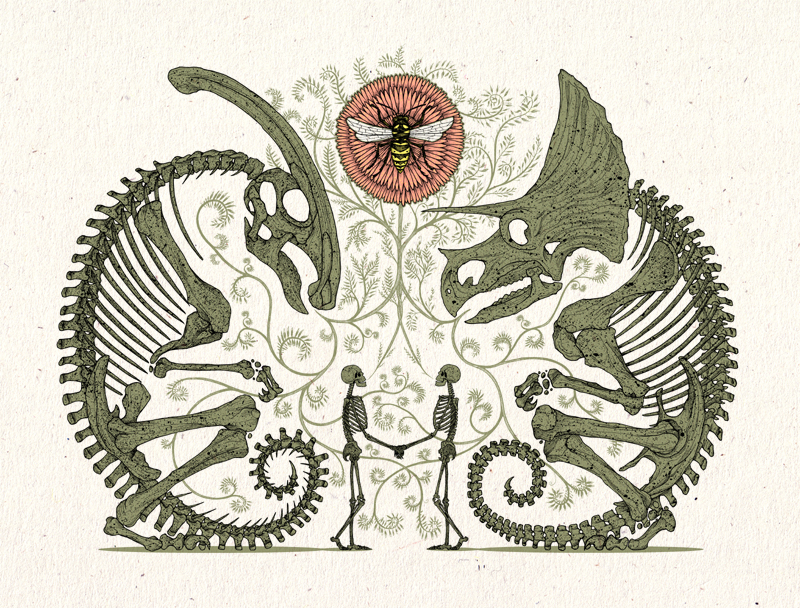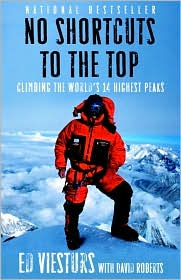I know I have posted this before (way in the past on my old blog), but in honor of this great day (in case your living under a rock, Indiana Jones 4 is out today, and I will be seeing it at 6:40pm), I give you "Professor Henry Jones is denied tenure":
January 22, 1939
Assistant Professor Henry "Indiana" Jones Jr.
Department of Anthropology
Chapman Hall 227B
Marshall College
Dr. Jones:
As chairman of the Committee on Promotion and Tenure, I regret to inform you that your recent application for tenure has been denied by a vote of 6 to 1. Following past policies and procedures, proceedings from the committee's deliberations that were pertinent to our decision have been summarized below according to the assessment criteria.
Demonstrates suitable experience and expertise in chosen field:
The committee concurred that Dr. Jones does seem to possess a nearly superhuman breadth of linguistic knowledge and an uncanny familiarity with the history and material culture of the occult. However, his understanding and practice of archaeology gave the committee the greatest cause for alarm. Criticisms of Dr. Jones ranged from "possessing a perceptible methodological deficiency" to "practicing archaeology with a complete lack of, disregard for, and colossal ignorance of current methodology, theory, and ethics" to "unabashed grave-robbing." Given such appraisals, perhaps it isn't surprising to learn that several Central and South American countries recently assembled to enact legislation aimed at permanently prohibiting his entry.
Moreover, no one on the committee can identify who or what instilled Dr. Jones with the belief that an archaeologist's tool kit should consist solely of a bullwhip and a revolver.
Nationally recognized for an effectual program of scholarship or research supported by publications of high quality:
Though Dr. Jones conducts "field research" far more often than anyone else in the department, he has consistently failed to report the results of his excavations, provide any credible evidence of attending the archaeological conferences he claims to attend, or produce a single published article in any peer-reviewed journal. Someone might tell Dr. Jones that in academia "publish or perish" is the rule. Shockingly, there is little evidence to date that Dr. Jones has successfully excavated even one object since he arrived at Marshall College. Marcus Brody, curator of our natural-history museum, assured me this was not so and graciously pointed out several pieces in the collection that he claimed were procured through Dr. Jones's efforts, but, quite frankly, we have not one shred of documentation that can demonstrate the provenance or legal ownership of these objects.
Meets professional standards of conduct in research and professional activities of the discipline:
The committee was particularly generous (and vociferous) in offering their opinions regarding this criterion. Permit me to list just a few of the more troubling accounts I was privy to during the committee's meeting. Far more times than I would care to mention, the name "Indiana Jones" (the adopted title Dr. Jones insists on being called) has appeared in governmental reports linking him to the Nazi Party, black-market antiquities dealers, underground cults, human sacrifice, Indian child slave labor, and the Chinese mafia. There are a plethora of international criminal charges against Dr. Jones, which include but are not limited to: bringing unregistered weapons into and out of the country; property damage; desecration of national and historical landmarks; impersonating officials; arson; grand theft (automobiles, motorcycles, aircraft, and watercraft in just a one week span last year); excavating without a permit; countless antiquities violations; public endangerment; voluntary and involuntary manslaughter; and, allegedly, murder.
Dr. Jones's interpersonal skills and relationships are no better. By Dr. Jones's own admission, he has repeatedly employed an underage Asian boy as a driver and "personal assistant" during his Far East travels. I will refrain from making any insinuations as to the nature of this relationship, but my intuition insists that it is not a healthy one, nor one to be encouraged. Though the committee may have overstepped the boundaries of its evaluation, I find it pertinent to note that Dr. Jones has been romantically linked to countless women of questionable character, an attribute very unbecoming of a Marshall College professor. One of these women was identified as a notorious nightclub singer whose heart he attempted to extract with his hands, and whom he then tried, and failed, to lower into a lake of magma. Another was a Nazi scholar he was seen courting just last year who, I'm told, plummeted into a fathomless abyss at Dr. Jones's hand. And, of course, no one can forget the slow decline and eventual death of Professor Abner Ravenwood after Dr. Jones's affair with Abner's underage daughter was made public, forcing her to emigrate to Nepal to escape the debacle.
Demonstrates successful record in undergraduate and graduate teaching:
In his nine years with the department, Dr. Jones has failed to complete even one uninterrupted semester of instruction. In fact, he hasn't been in attendance for more than four consecutive weeks since he was hired. Departmental records indicate Dr. Jones has taken more sabbaticals, sick time, personal days, conference allotments, and temporary leaves than all the other members of the department combined.
The lone student representative on the committee wished to convey that, besides being an exceptional instructor, a compassionate mentor, and an unparalleled gentleman, Dr. Jones was extraordinarily receptive to the female student body during and after the transition to a coeducational system at the college. However, his timeliness in grading and returning assignments was a concern.
Establishment of an appropriate record of departmental and campus service:
Dr. Jones's behavior on campus has led not only to disciplinary action but also to concerns as to the state of his mental health. In addition to multiple instances of public drunkenness, Dr. Jones, on three separate occasions, has attempted to set fire to the herpetology wing of the biology department. Perhaps most disturbing, however, are the statements that come directly from Dr. Jones's mouth. Several faculty members maintain that Dr. Jones informed them on multiple occasions of having discovered the Ark of the Covenant, magic diamond rocks, and the Holy Grail! When asked to provide evidence for such claims, he purportedly replied that he was "kind of immortal" and/or muttered derogatory statements about the "bureaucratic fools" running the U.S. government. Given his history with the Nazi Party, I fear where his loyalty lies.
- - - -
To summarize, the committee fails to recognize any indication that Dr. Jones is even remotely proficient when it comes to archaeological scholarship and practice. His aptitude as an instructor is questionable at best, his conduct while abroad is positively deplorable, and his behavior on campus is minimally better. Marshall College has a reputation to uphold. I need not say more.
My apologies,
Prof. G.L. Stevens
Chairman
 This week and all of next I will be out in northwestern Nebraska doing fieldwork! During the summer, the Geology Department at Augustana College (where I currently work as a Paleontology Research Assistant - for a few more weeks at least) offers a 3-credit course entitled "Fossil Mammals of the Badlands." This 2-week course travels to the White River Badlands of South Dakota and Nebraska to learn about the paleontology and geology of the area. The group camps on Shalimar Ranch, outside of Harrison, Nebraska, and collects fossils on privately owned land. This trip has become a tradition, with the first trip in 1982. This will be my third trip and we have quite a big group this year. I am looking forward to getting out and doing some field work, enjoying the sun (hopefully!) and peace that comes from being in the field. Its always a good way to transition into summer and get my blood flowing again after the long winter. I am looking forward to the camp fires and dusty days of hiking.
This week and all of next I will be out in northwestern Nebraska doing fieldwork! During the summer, the Geology Department at Augustana College (where I currently work as a Paleontology Research Assistant - for a few more weeks at least) offers a 3-credit course entitled "Fossil Mammals of the Badlands." This 2-week course travels to the White River Badlands of South Dakota and Nebraska to learn about the paleontology and geology of the area. The group camps on Shalimar Ranch, outside of Harrison, Nebraska, and collects fossils on privately owned land. This trip has become a tradition, with the first trip in 1982. This will be my third trip and we have quite a big group this year. I am looking forward to getting out and doing some field work, enjoying the sun (hopefully!) and peace that comes from being in the field. Its always a good way to transition into summer and get my blood flowing again after the long winter. I am looking forward to the camp fires and dusty days of hiking.































